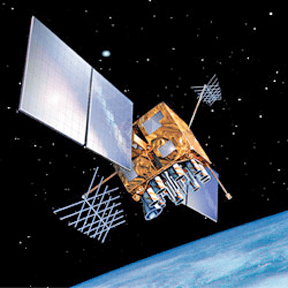Description

Disclaimer: Copyright infringement not intended.
What are the GSAT 7 series satellites?
- GSAT 7 satellites are advanced satellites developed by the Indian Space Research Organisation (ISRO) to meet the communication needs of the defence services.
- The GSAT 7 satellite was launched in August 2013 from an Ariane 5 ECA rocket from Kourou in French Guiana.
- It is a 2,650 kg satellite which has a footprint of nearly 2,000 nautical miles in the Indian Ocean region.
- This satellite is mainly used by the Indian Navy for its communication needs.
- The satellite was injected into a geosynchronous transfer orbit (GTO) of 249 km perigee (nearest point to earth), 35,929 km apogee (farthest point to earth) and an inclination of 3.5 degree with respect to the equator.2
Services provided
- The GSAT 7 provides a gamut of services for military communication needs, which includes low bit voice rate to high bit rate data facilities, including multi-band communications.
- Named Rukmini, the satellite helps the Navy to have a secure, real time communication link between its land establishments, surface ships, submarines and aircraft.
What will be the role of the GSAT 7B satellite?
- The GSAT 7B will primarily fulfill the communication needs of the Army. Currently, the Army is using 30 per cent of the communication capabilities of the GSAT 7A satellite, which has been designed for the Indian Air Force (IAF).
- The GSAT 7B will also help the Army enhance its surveillance in border areas.
What is the role of the GSAT 7A satellite, which is already operational?
- The GSAT 7A was launched in 2018 from the Satish Dhawan Space Centre in Sriharikota, and has gone a long way in boosting the connectivity between the ground radar stations, airbases and the airborne early warning and control aircraft (AEW&C) of the IAF.
- It also helps in satellite controlled operations of unmanned aerial vehicles (UAVs) which gives a great deal of reliability to the operations as compared to ground controlled operations.
- A further GSAT 7C satellite would facilitate real time communication with IAF’s software defined radio communication sets. It will increase the capability of the IAF to communicate beyond the line of sight in a secure mode.
What other kinds of military satellites does India have?
EMISAT
- An Electromagnetic Intelligence Gathering Satellite (EMISAT), developed by ISRO, was launched in April 2020 through a Polar Satellite Launch Vehicle (PSLV-C45). It has an Electronic Intelligence (ELINT) package called Kautilya, which allows the interception of ground-based radar and also carries out electronic surveillance across India.
- The ELINT package provides the capability in direction-finding of radar and fixing their locations.
- It is placed in a 748-km orbit, and is said to be based on the Israeli satellite system.
- This satellite circles the globe pole-to-pole, and is helpful in gathering information from radars of countries that have borders with India.
RISAT 2BR1
- India has a RISAT 2BR1 synthetic aperture radar imaging satellite, which was launched in 2019 from Sriharikota.
- It has the capability to operate in different modes including very high resolution imaging modes of 1×0.5 metre resolution and 0.5×0.3 m resolution with a swath of 5-10 km.
Important Links
https://www.iasgyan.in/daily-current-affairs/satellite-launch-vehicles
https://www.iasgyan.in/blogs/types-of-orbits-explained
https://www.iasgyan.in/blogs/the-basics-of-missiles
WATCH:
https://www.youtube.com/watch?v=wrNNbSV8zkA
https://www.youtube.com/watch?v=3hz3J26P5IQ
https://indianexpress.com/article/explained/explained-the-gsat-7b-and-indias-other-military-satellites-7834659/#:~:text=What%20are%20the%20GSAT%207,from%20Kourou%20in%20French%20Guiana










